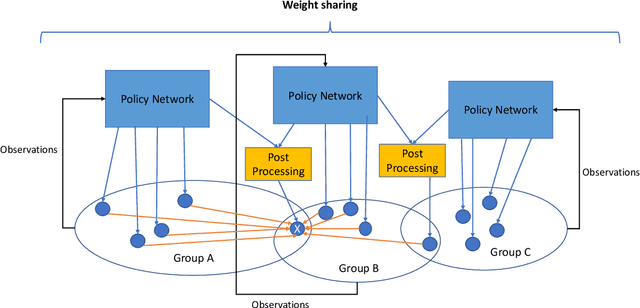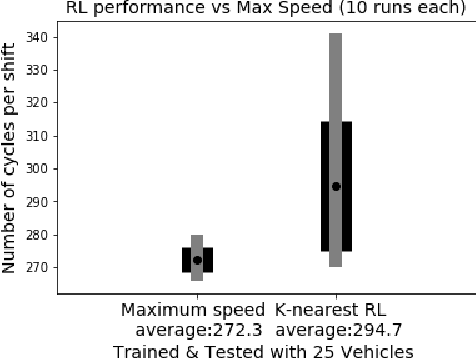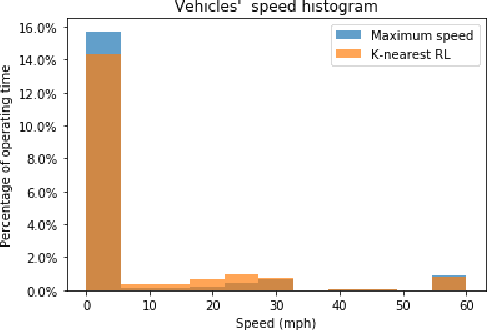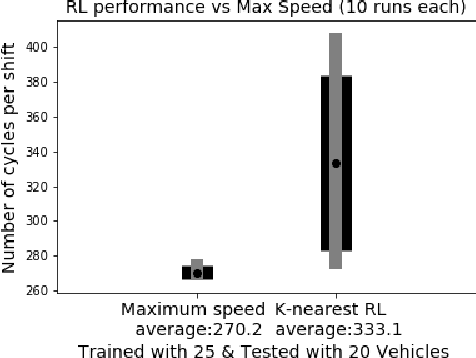Hsiu-Khuern Tang
K-nearest Multi-agent Deep Reinforcement Learning for Collaborative Tasks with a Variable Number of Agents
Jan 18, 2022



Abstract:Traditionally, the performance of multi-agent deep reinforcement learning algorithms are demonstrated and validated in gaming environments where we often have a fixed number of agents. In many industrial applications, the number of available agents can change at any given day and even when the number of agents is known ahead of time, it is common for an agent to break during the operation and become unavailable for a period of time. In this paper, we propose a new deep reinforcement learning algorithm for multi-agent collaborative tasks with a variable number of agents. We demonstrate the application of our algorithm using a fleet management simulator developed by Hitachi to generate realistic scenarios in a production site.
Predicting Clinical Deterioration in Hospitals
Feb 11, 2021



Abstract:Responding rapidly to a patient who is demonstrating signs of imminent clinical deterioration is a basic tenet of patient care. This gave rise to a patient safety intervention philosophy known as a Rapid Response System (RRS), whereby a patient who meets a pre-determined set of criteria for imminent clinical deterioration is immediately assessed and treated, with the goal of mitigating the deterioration and preventing intensive care unit (ICU) transfer, cardiac arrest, or death. While RRSs have been widely adopted, multiple systematic reviews have failed to find evidence of their effectiveness. Typically, RRS criteria are simple, expert (consensus) defined rules that identify significant physiologic abnormalities or are based on clinical observation. If one can find a pattern in the patient's data earlier than the onset of the physiologic derangement manifest in the current criteria, intervention strategies might be more effective. In this paper, we apply machine learning to electronic medical records (EMR) to infer if patients are at risk for clinical deterioration. Our models are more sensitive and offer greater advance prediction time compared with existing rule-based methods that are currently utilized in hospitals. Our results warrant further testing in the field; if successful, hospitals can integrate our approach into their existing IT systems and use the alerts generated by the model to prevent ICU transfer, cardiac arrest, or death, or to reduce the ICU length of stay.
 Add to Chrome
Add to Chrome Add to Firefox
Add to Firefox Add to Edge
Add to Edge